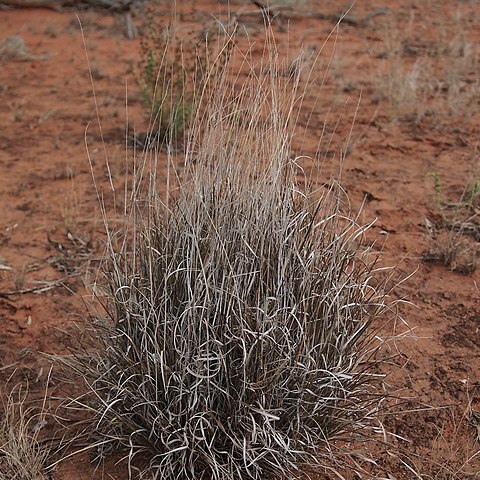A grass which keeps growing from year to year. It forms erect tufts. It grows 30-60 cm high. The leaves are narrow and roll inwards. They are stiff and have a sharp point. The stems are erect and wiry. They are thickened at the base. The flower panicle is dense and 4-6.5 cm long. It is purplish and becomes pale brown.

